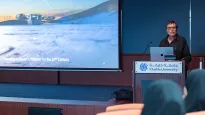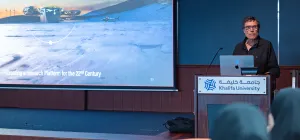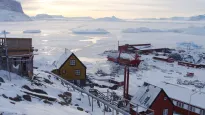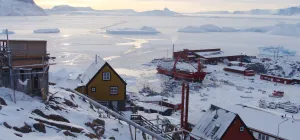Bad Weather Arrives at PEA
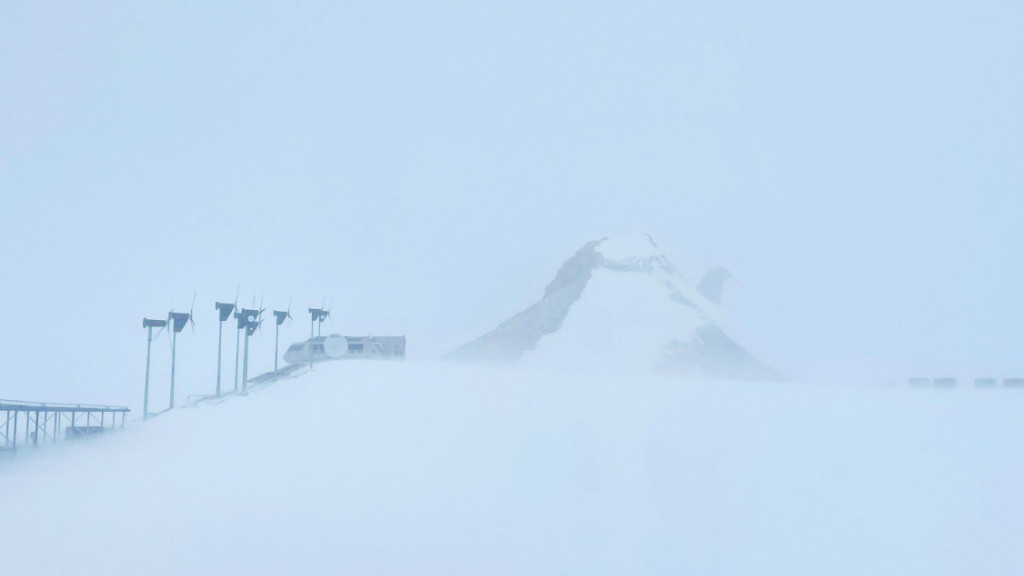
After some pleasant weather during the first few weeks of the season, stormy weather has arrived at the Princess Elisabeth Antarctica, forcing a few changes of plan and even unexpected visitors.
Adapting to the weather conditions
Anyone who works in Antarctica as a scientist or a member of the station crew knows that bad weather is always something you have to be prepared for. Towards the middle of last week, strong winds, heavy snowfall and whiteout conditions arrived in the Queen Maud Land where the Princess Elisabeth Antarctica is located, which led to several changes of plan.
Unfortunately, the Alfred Wegener Institute’s Polar 6 plane was not able to complete all of the ice monitoring transects it had planned along the Princess Ragnhild coast during its stay at PEA. Issue on one of the fuel pump grounded the plane for several days until a replacement part could be flown in. However, once the plan had been repaired, bad weather grounded the plane for several more days. As the plane is on a tight schedule, it had to continue on to the next stops on its itinerary for this season when the weather was again good enough to allow travel.
The bad weather also resulted in a group of unexpected guests: 13 Indian scientists and technicians (and 4 flight crew members) who were on their way home from overwintering at Bharati Station on the Prydz Bay area. They were passengers on the plane that had brought the replacement fuel pump part for the Polar 6 and ended up getting stuck at Princess Elisabeth Antarctica until December 14th.
While weather conditions had improved in the area of Antarctica where the Polar 6 was headed to allow the plane and the crew from AWI to depart, the weather is still bad at Ultima Air Field 450 km away from the Princess Elisabeth Antarctica, where the Indian team is scheduled to take their other station (Maitri) and flight home. While it was a bit more crowded at PEA than expected, the station has always been a very welcoming place, our unexpected guests have adapted easily to life at the station, even helping our cook to prepare some delicious authentic Indian meals! Overall it was a great opportunity to meet other station crew members and share cultural differences in a very friendly atmosphere.
A changing climate
The weather conditions in recent seasons have noticeably changed compared to the years during which the station was constructed (2007-09) with events of warmer temperatures and sustained winds for sporadic long periods of time.
Although extreme weather events may happen anytime within the course of history, their increasing frequency and reduction of the predictability of the weather can be considered as a symptom of climate change that is slowly reaching the Antarctic continent.
Some of the veterans who took part in building the station recall that temperatures would easily hover between -25°C and -20°C during the day in the austral summer when they were working outside. In November this year, temperatures got close to 0°C for a few days. The BELARE 2021-2022 expedition is remembered as the windiest and harshest due to several weeks of strong winds and snowfall in the middle of the austral summer
Traverse in whiteout conditions
Meanwhile at the coast, BELARE expedition leader Alain Hubert and three team members have been busy doing a traverse to the coast to continue preparing containers of waste from the station to be evacuated by ship and conduct reconnaissance at the coast to find an ideal spot for the supply ship to moor when it is scheduled to arrive early January 2024.
The bad weather created whiteout conditions during the traverse, which meant zero visibility. Luckily, the BELARE team knows the route well and make extensive use of their GPS to navigate even when visibility is zero. Expedition leader Alain Hubert has successfully handled whiteout conditions dozens of times at both poles, so everything has been going smoothly.
New water treatment system almost ready!
Thanks to the hard work of our plumbers Bernard and Simeon and engineers Aymar and Nicolas, the new water treatment system is almost ready to go online. The engineers are still fine-tuning the numeric programming of the system while the plumbers have been testing the bioreactor and putting the last pipes and electric connexions of the system in place.
The station plans to switch to the new system before the end of the year.
Download


















